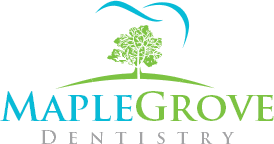An ounce of prevention, the adage goes, is worth a pound of cure. It’s always better to prevent bad things from happening, rather than accept the consequences of calamities coming to pass. When the health of your teeth and gums is concerned, this adage rings exceptionally true. The human body is amazingly capable of healing itself and finding ways to self-correct inadequacies; cuts heal, bones mend, and our immune system fights off infection every day. Unfortunately, the major exception to this is our teeth. Once tooth decay sets in, there is nothing the human body can do to reverse it. It will only worsen and cause greater damage when left untreated. For this reason, modern dentistry has developed an arsenal of tactics and techniques to prevent tooth decay and gum disease.
Tooth decay is caused by bacteria. Our mouths are the natural home to many strains of bacteria, which, if allowed to flourish, weaken and breach the enamel of our teeth, leading to tooth decay. Cavities can ultimately infiltrate the inner dentin of the tooth and cause pain and tooth loss if not treated with dental restorations, such as fillings. Bacteria can also lead to chronic gum disease, which inflames and destroys the soft gum tissues that hold our teeth in place. Cavities damage our teeth, but the greatest cause of tooth loss is actually gum disease. Bacteria only get the chance to do harm, however, when they are allowed to feed on dental plaque and calculus, and there are several ways we can stop that from happening.
If your teeth and gums are not reason enough to enlist you in the war on harmful bacteria, there is also ample medical research that links gum disease to a number of other serious illnesses. Heart disease, diabetes, cancer, and rheumatoid arthritis are just a few illnesses that have a direct connection to mouth bacteria. When you have gum disease, frequently bleeding gums give bacteria access to the rest of your body via the bloodstream. There are many reasons to take your “ounce of prevention” seriously: to preserve the health and strength of your teeth and gums, as well as the continued well-being of your whole body.
If you want to maximize the benefits of preventive dentistry, or if you need to schedule a routine dental appointment, call our office to set up a consultation with Dr. Jensen at 208-853-2221
Your Dentist’s Tools Of Prevention
A dentist’s strongest weapon against tooth decay is being able to deliver professional teeth cleanings every six months. Even the most skilled and astute tooth-brushers accumulate calcified plaque (tartar) on their teeth, which leads to cavities when untreated. Tartar is bacteria’s favorite food, and can only be removed by a dentist or hygienist.
Lasers have become an efficient tool for dental cleanings, as they not only remove tartar with less tooth sensitivity than traditional dental tools, but can also identify spots of dimineralization on tooth enamel. During a routine examination Dr. Jensen will check for “soft spots” where enamel has been weakened by bacteria and cavities may soon develop. Special lasers can assist in locating these spots, so they can be treated to stop decay from progressing.
Fluoride treatment is another essential tool to prevent tooth decay. Fluoride is added to our drinking water and your toothpaste, rinses, and floss because it is the safest, most effective substance for strengthening tooth enamel. Regular fluoride treatments give you another layer of protection beyond your daily routine.
Another technique, which is particularly helpful wfor teeth used for chewing (molars), is providing a barrier in the form of sealants. Our back teeth are shaped differently from other teeth, to help us pulverize food before swallowing. Ridges and crevasses on molars are excellent for breaking down food—but they are also more prone to developing cavities, as they offer more nooks in which bacteria can habitate. Plastic sealants fill and seal off some of the deeper ridges in our molars, without affecting their ability to grind food. Such sealants take only minutes to apply, and can prevent cavities in molars for several years.
Prevention At Home: Brushing And Flossing
You most likely know the steps you should take at home to prevent tooth decay, but it may be helpful to remember why you do them. The American Dental Association (ADA) recommends brushing your teeth twice a day, and flossing once a day. Both activities are designed to clean the teeth of any particles of food that remain after you eat, as well as the bacteria that cling to those particles and feed on them. Fluoride is especially good for protecting the enamel of your teeth, so be sure your toothpaste has plenty of it. Flossing is another critical technique for removing plaque and bacteria from between your teeth and under the edges of your gums. If your teeth are close together, this is an essential step; microscopic bacteria can fit between your teeth, even if your toothbrush cannot.
When plaque is not adequately removed by brushing and flossing, it can calcify into insoluble tartar, which provides bacteria with a permanent food source that can only be removed by a dentist or hygienist. Skipping your brushing routine for even one day can significantly increase the amount of enamel-damaging bacteria living in your mouth. The ADA recommends a number of tips for brushing teeth that have been proven to effectively clean your teeth without damaging your enamel or the soft tissues of the mouth.
Tips For Brushing
- Brush twice a day. (Routinely brushing more than twice may harm your gums.)
- Use a soft-bristled toothbrush, as hard or medium bristles may also irritate your gums.
- Brush for two minutes each time. This has been determined to be the optimum time needed for reaching every surface of teeth, without overdoing it.
- Use a fluoride toothpaste, preferably one endorsed with the ADA seal.
- Hold your toothbrush at 45 degrees, and use a variety of brushing techniques: up and down, in small circles, etc. Change the way you grip your toothbrush to reach different surfaces of your teeth, such as the backs of your front teeth, and behind your molars.
- Gently brush your tongue and all other surfaces of the mouth to further remove bacteria.
Tips For Flossing
- Floss every day. Those who do not floss daily may experience bleeding gums, which may make you less inclined to keep flossing—but you must. When daily flossing starts, any bleeding should stop within two weeks, as your gums become healthier and more resilient.
- Use whatever type of floss is most pleasant for you. You may prefer teflon-coated Glide floss, cinnamon flavored floss, unwaxed floss, or preloaded dental flossing picks—use whichever form will encourage you to stick with a daily routine.
- Floss between every tooth, gently scraping up and down to remove plaque and bacteria.
- Floss under the gum line, in a small c-curve, to get beneath the surface of the gums.
- Use approximately 18 inches of floss. Wind it around the index fingers of each hand, to give you the greatest amount of flexibility in reaching each tooth.
Fluoride rinses can also assist with removing bacteria from your teeth, as can antiseptic rinses such as Listerine. But unless your dentist prescribes a particular rinse for the treatment of gingivitis or periodontitis, do not consider them a requirement for your daily routine. They cannot take the place of brushing or flossing.
Prevention At Home: Starving The Bacteria
In addition to daily brushing and flossing, you can also reduce the growth of bacteria in your mouth by removing their food source. With the prevalence of brushing and flossing, many people take for granted that avoiding certain foods and beverages can actually be more effective at controlling bacteria.
Sugary food and drinks, such as candy and sodas, accellerate the growth of bacteria. Even if you are brushing your teeth twice a day, every hour those sticky sugar molecules sit on your teeth increases the amount of bacteria living on your enamel. It’s not enough that you plan to brush the sugar away later—if you consume large amounts of sweets regularly, the damage may be happening despite brushing your teeth.
But it’s not just sugary sodas and sweets you should avoid. Many people don’t realize, starchy foods that convert to sugar in the body can be equally damaging. Potato chips and white bread, for example, stick to your teeth as readily as candy, so excess should be avoided. You can also strengthen the enamel of your teeth by avoiding acidic foods, or taking them with non-acidic foods to neutralize damaging effects. For example, if you like to sip lemonade or coffee all day, make sure you intermittently snack on low-acid snacks, such a vegetables and dairy products.
Staying well-hydrated can also help control bacteria. Dehydration is not just dangerous to many body systems—it can also put your teeth at risk. When you aren’t well hydrated, your body produces less saliva, which is your first natural defense against mouth bacteria. Avoiding excessive amounts of alcohol and caffeine is a great way to prevent dehydration and dry mouth. Be mindful if medications cause dry mouth, and consider chewing gum to ramp up your saliva production if drinking water isn’t enough.
Techniques And Tactics For Preventing Tooth Decay
Dr. Jensen offers a number of techniques that prevent bacteria from gaining the upper hand—removing tartar, strengthening enamel, sealing off high-risk areas—and no doubt you’ve developed our own brushing and flossing techniques that work for you. But the best tactics are (1) sticking to routines, and (2) creating layers of protection. If you maintain your daily routine for home care, and your twice a year routine for professional dental care, you will have every advantage against bacteria and cavities. Likewise, you create multiple layers of protection against bacteria when you brush and floss, use fluoridated products, and provide less food for bacteria in the form of starches and sugars.
To learn more about preventive dentistry, or if you need to schedule a routine dental appointment, call our office to set up a consultation with Dr. Jensen at 208-853-2221


